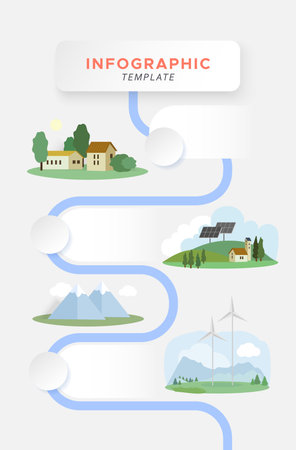Introduction to Sustainable Bathroom Water Solutions
Water scarcity is becoming an increasingly pressing issue across many parts of the United States, affecting everything from agriculture to our daily routines at home. In fact, states like California, Arizona, and Texas have experienced significant droughts in recent years, leading to water restrictions and a growing public awareness about conservation. Despite these challenges, the average American household still uses nearly 300 gallons of water every day, with bathrooms accounting for almost half of that usage. This reality makes it more important than ever to adopt sustainable water practices right where they matter most—in our own homes. By rethinking how we use and reuse water in the bathroom, we can make a real difference in reducing our overall consumption and easing the strain on local water supplies. Embracing solutions like rainwater harvesting and greywater recycling not only helps conserve precious resources but also supports a more eco-friendly lifestyle that benefits both our communities and the environment.
2. What is Rainwater Harvesting?
Rainwater harvesting is an environmentally conscious method of collecting and storing rainwater for later use, often to reduce reliance on municipal water supplies. In the United States, this practice is gaining traction as homeowners seek sustainable solutions for everyday living, especially in areas prone to drought or with high water costs.
How Does Rainwater Harvesting Work?
Most rainwater harvesting systems are simple yet effective. The basic process involves capturing rain that falls onto rooftops, directing it through gutters and downspouts, then filtering and storing it in tanks or cisterns. Homeowners can use harvested rainwater for various non-potable applications such as toilet flushing, garden irrigation, and even laundry. Some advanced systems include additional filtration to make water suitable for bathing or drinking, though local regulations may limit these uses.
Common System Components
| Component | Description |
|---|---|
| Catchment Area | The rooftop or surface where rain collects |
| Gutters/Downspouts | Channels to direct water to storage |
| First Flush Diverter | Removes initial runoff containing debris |
| Storage Tank/Cistern | Stores collected water for future use |
| Filter System | Cleans water before use in the home |
| Pump (optional) | Delivers water to fixtures or irrigation systems |
Benefits for American Homeowners
- Lower Utility Bills: Reduce dependence on city water, cutting monthly costs.
- Drought Resilience: Maintain gardens and essential bathroom functions during water restrictions.
- Sustainable Living: Conserve a vital resource and support eco-friendly habits at home.
- Stormwater Management: Mitigate urban flooding by reducing runoff from your property.
US Practices and Regulations
Laws surrounding rainwater harvesting vary by state and municipality. For example, Colorado once restricted collection but now allows limited residential use. Texas and California actively encourage rainwater harvesting with rebates and educational programs. Always check local building codes before installing a system to ensure compliance with safety and backflow prevention standards.
Summary Table: State Approaches to Rainwater Harvesting
| State | Status/Regulation Overview |
|---|---|
| California | Promotes rainwater harvesting; incentives available for homeowners. |
| Texas | No restrictions; offers tax exemptions and resources for installation. |
| Colorado | Allows limited residential collection with restrictions on volume/use. |
| Nevada | No statewide ban; local rules may apply. |
| Oregon/Washington | Largely permitted; guidelines ensure safe system design. |
By understanding how rainwater harvesting works and its benefits within the framework of U.S. laws, you can take meaningful steps toward a greener, more efficient bathroom—and a more sustainable home overall.

3. Understanding Greywater Recycling
Greywater recycling is a practical and eco-friendly way to reduce water usage in your bathroom, supporting a more sustainable lifestyle right at home. In simple terms, greywater refers to the gently used water from household sources like showers, bathtubs, bathroom sinks, and washing machines. Unlike blackwater (from toilets), greywater contains fewer contaminants and can be safely repurposed for non-potable uses with minimal treatment.
Most American households produce a significant amount of greywater every day—think about the water that goes down the drain after brushing your teeth or doing laundry. Instead of letting this relatively clean water flow straight into the sewer system, you can capture and redirect it for flushing toilets or watering your garden. This approach not only conserves fresh water but also reduces the strain on municipal sewage systems.
Integrating greywater recycling into your daily routine doesn’t have to be complicated or disruptive. Many modern homes are being designed with dual plumbing systems to make collecting and reusing greywater easier than ever. Even if you’re retrofitting an older home, simple solutions like a bucket in the shower or a direct diversion system from your washing machine can make a big difference. Embracing greywater recycling means making mindful choices about which soaps and detergents you use—opting for biodegradable and plant-based products to ensure your recycled water is safe for plants and soil.
By understanding how greywater recycling works and identifying which household waters can be reused, you take a meaningful step toward making your bathroom—and your whole home—greener. It’s about weaving sustainability into the fabric of everyday life, one drop at a time.
4. Environmental and Economic Benefits
Implementing rainwater harvesting and greywater recycling in your bathroom offers a powerful combination of environmental and financial advantages. These systems not only help conserve precious water resources but also reduce monthly utility bills, making them an increasingly popular choice among eco-conscious American families.
Saving Water for the Future
Rainwater harvesting collects runoff from roofs and stores it for non-potable uses such as toilet flushing or garden irrigation. Greywater recycling, on the other hand, repurposes lightly used water from sinks and showers for similar tasks. Together, these approaches can cut household water consumption by up to 50%, easing the strain on municipal supplies—especially important during droughts common in parts of California and the Southwest.
Lower Utility Bills
By reducing dependence on city water, families see real savings on their monthly bills. Consider this table comparing traditional bathrooms with those using rainwater and greywater systems:
| Feature | Traditional Bathroom | Sustainable Bathroom (with Rainwater & Greywater) |
|---|---|---|
| Average Monthly Water Use (gallons) | 2,000 | 1,000 |
| Average Monthly Water Bill ($) | $60 | $30-$35 |
| Annual Savings ($) | N/A | $300+ |
Supporting Eco-Friendly Living: Real-Life Examples
The Smith family in Portland installed a simple rain barrel system and now uses collected rainwater for all their toilet flushes, cutting their water bill by nearly 40%. In Austin, the Johnsons implemented greywater recycling connected to their landscape irrigation; their yard thrives without additional municipal water, even during summer restrictions. These stories are echoed across America as more homeowners embrace sustainable solutions that fit local climates and lifestyles.
A Win-Win for People and the Planet
By adopting rainwater harvesting and greywater recycling, American families not only support environmental stewardship but also gain direct financial benefits. These smart upgrades make bathrooms more sustainable, resilient, and aligned with eco-friendly values—a win-win for every household looking to make a positive impact.
5. Practical Steps for At-Home Implementation
Getting Started with Rainwater Harvesting
Integrating rainwater harvesting into your bathroom is easier than you might think. Start by installing a rain barrel or a small cistern outside your home, ideally under a gutter downspout. These systems collect runoff from your roof and store it for non-potable uses, such as flushing toilets or watering plants. Make sure to use food-grade barrels and include a mesh screen to keep out debris and mosquitoes. For DIY enthusiasts, many local hardware stores offer rain barrel kits that are easy to set up without professional help.
Implementing Greywater Recycling in Your Bathroom
Greywater recycling involves capturing gently used water from sinks, showers, and bathtubs for reuse in toilet flushing or landscape irrigation. In the U.S., check local codes before installation, as regulations can vary. A basic setup can involve redirecting bathroom sink or tub drain pipes to a storage tank fitted with a simple filtration system. Use eco-friendly soaps and cleaners to keep greywater safe for reuse. If you’re handy, there are affordable DIY greywater diverter kits available online that can be retrofitted to most bathroom plumbing systems.
Sustainable Design Tips for Seamless Integration
For a cohesive look, choose recycled materials or sustainably sourced wood for any visible components like rain barrels or filter housings. Consider native plants around your rain barrel area to absorb overflow water naturally and add beauty to your yard. Inside the bathroom, opt for low-flow fixtures and dual-flush toilets to maximize the efficiency of both harvested rainwater and recycled greywater.
Pro Tips for American Homes
Remember, even small changes make a big difference over time. Start with one system—such as a single rain barrel or basic greywater diverter—and scale up as you get comfortable. Always label non-potable water sources clearly to avoid confusion. Finally, connect with local sustainability groups or extension offices for workshops, advice, and potential rebates on water-saving equipment. By making these thoughtful updates, you’ll create a bathroom that’s both eco-friendly and uniquely suited to the American lifestyle.
6. Frequently Asked Questions and Common Challenges
Is it legal to harvest rainwater and recycle greywater in the US?
Laws around rainwater harvesting and greywater recycling vary widely across states and even municipalities. For example, Colorado has specific regulations limiting rainwater collection, while states like Texas and California actively encourage it. Greywater reuse is generally permitted for landscape irrigation in many places, but often requires following health codes or obtaining permits. Always check your local building codes and state guidelines before installing any system.
How much maintenance do these systems require?
Maintenance depends on your systems complexity. Basic rain barrel setups need occasional cleaning to prevent mosquito breeding and debris buildup. More advanced systems with filtration or pumps may require regular inspections, filter changes, and winterizing in colder climates. Greywater systems should be monitored for clogs, odors, or leaks; using biodegradable soaps helps keep pipes clear. Setting a seasonal maintenance schedule helps everything run smoothly.
What are the best practices for safety and efficiency?
For rainwater harvesting, use food-grade barrels and keep them covered to avoid contamination. Install first-flush diverters to prevent roof debris from entering storage tanks. For greywater recycling, only use water from sinks, showers, or washing machines—not from toilets or kitchen sinks—to minimize health risks. Direct greywater to sub-surface irrigation rather than spray systems to further reduce contact and evaporation losses.
What challenges might I face in different US climates?
In arid regions like the Southwest, maximizing storage capacity during infrequent rains is key, while ensuring tight seals prevents evaporation loss. In humid areas like the Southeast, plan for heavy rainfall by installing overflow outlets and erosion control around collection points. Cold climates require frost-proofing pipes and draining systems before winter to avoid damage. Adapt your design based on your region’s weather patterns and water needs.
How can these systems benefit diverse communities?
Rainwater harvesting and greywater recycling help urban households lower utility bills and provide critical resilience during droughts or supply interruptions. In rural areas or communities with unreliable infrastructure, these solutions offer an independent water source for gardens and landscaping. Educational initiatives and community workshops can increase awareness and adoption across neighborhoods of all backgrounds.
Final Tips
No matter where you live, start small—a single rain barrel or a simple laundry-to-landscape greywater setup can make a difference. Connect with local sustainability groups or extension services for guidance tailored to your area’s conditions and regulations. With thoughtful planning, your sustainable bathroom can be both eco-friendly and fully compliant with US standards.


